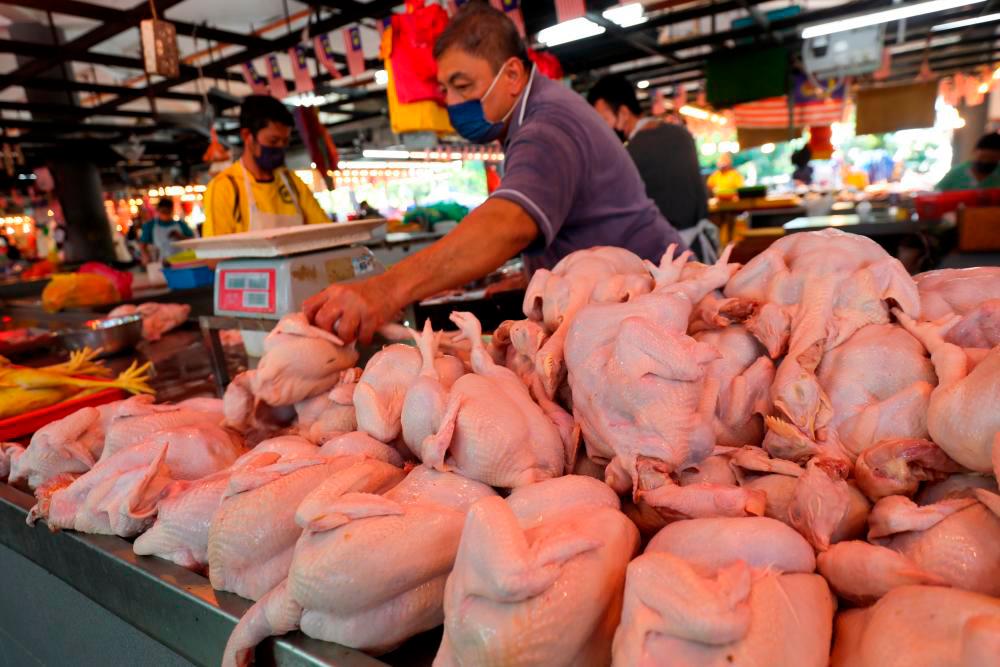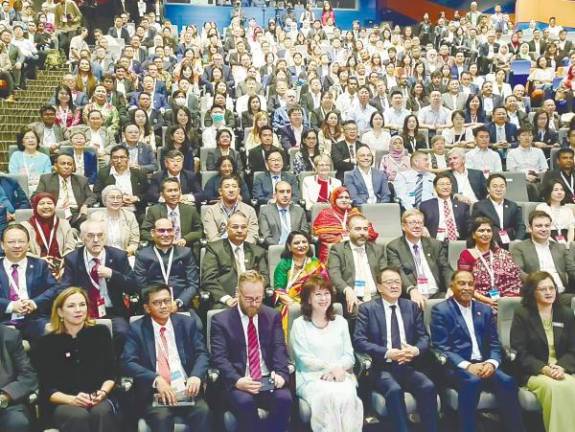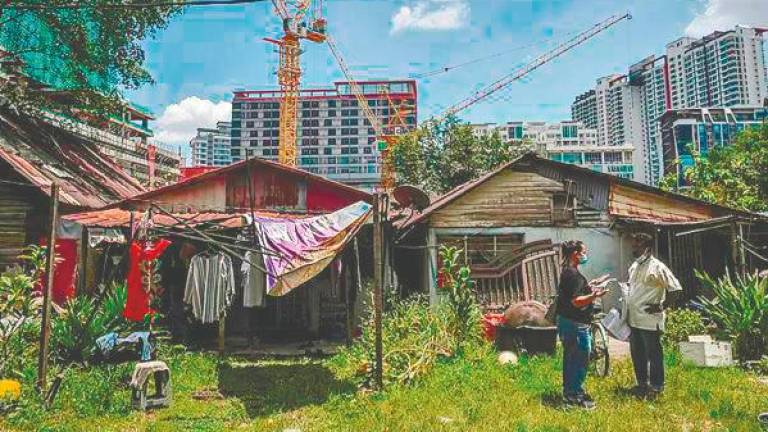ONE long-term solution which was mentioned in Prime Minister Ismail Sabri Yaakob’s statement after the May 23 Cabinet meeting to discuss solutions to the shortage of chicken in the country is for Malaysia to be self-sufficient in producing chicken feed.
This will reduce the hefty cost of poultry farming in light of the high cost of fertilisers and wheat, and the vulnerability of imports to currency fluctuations
The Ministry of Agriculture and Food Industries (Mafi) and the Domestic Trade and Consumer Affairs Ministry have been tasked to present plans on the proposal for the cultivation of corn and the use of palm kernel cake as chicken feed alternatives.
In response to this, the Kelantan state government is ready to cultivate corn as a long-term alternative to poultry feed.
Its state executive councillor for Agriculture, Agro-based Industry, Biotechnology, Green Technology and Environment, Tuan Mohd Saripudin Tuan Ismail is reported to have said several corn varieties of the cereal crop for animal feed planted in Bachok four years ago have proven to have high yields, but the programme was stopped due to the lack of market demand at that time.
“In the past, we planted grain corn to be processed as animal feed, including chicken, but it had to be replaced with sweet corn, pearl corn and fat corn because grain corn was less popular in the market at that time.
“Now the government is ready to convert the existing maize crop to grain maize to be processed into food for livestock.
“The state government and farmers are ready to work together for the development of animal feed that can be done on a large scale, including on abandoned agricultural lands,” he was quoted as saying.
He added, that the farmers need support from the federal government through incentives and subsidies related to fertilisers and pesticides because they are burdened with a double increase in the price of planting materials and need to ensure that they can be sold, for example through contract agreements with any relevant parties.
Also, the state government is working to increase its maize yield in Jeli, from one million crops to 10 million.
“Kelantan also has maize crops of these types in Lojing, Gua Musang, Tanah Merah and Bachok which can be used as animal feed based on a study. It’s just that the corn needs to go through a drying process and be crushed as well as added with ingredients such as soy to increase the nutrition to be given to livestock,” he said.
On May 23, the federal Cabinet asked state governments, government agencies and government-linked companies to grant Temporary Occupancy Licences to farmers so they could cultivate maize as poultry feed.
The Cabinet also gave an immediate green light for cooperatives involved in the plantation sector to hire foreign workers, to overcome the current poultry shortage in the country.
The government’s move towards self-sufficiency in animal feed was already announced last month by the Agriculture and Food Industries Minister Datuk Seri Ronald Kiandee when he said the government is formulating a policy to reduce dependence on animal feed imports by promoting grain corn farming.
He announced then 80,000ha nationwide will be used to plant grain corn by the year 2023, and it encouraged private large scale farming of this crop.
It is unclear if this is linked to the Grain Corn Development Master Plan (2018-2032) launched by the government in 2016 to produce 30% of grain corn required for domestic consumption.
The government had grappled with the grain corn production issue since the 1980s when it was identified as a key vulnerability to the nation’s food security.
From 1989 to 1992, a commercial trial was conducted, but the yield was low compared with other crops such as oil palm and thus deemed unsustainable. The project was terminated in 1996.
In the past years, the ministry has evaluated grain corn industries in neighbouring Thailand, the Philippines and Indonesia, and believes it can succeed this time by following these countries’ lead according to the Malaysian Agricultural Research and Development Institute (Mardi).
Indonesia produced 12 million metric tons of grain corn in 2020, followed by the Philippines (8 million metric tons), Thailand (5.5 million metric tons) and Vietnam (4.54 million metric tons).
In contrast, Malaysia produced 80,000 metric tons of corn, much of which is sweet corn not used for animal feed.
Under the 2016 Master Plan, the ministry aimed to open 30,000ha of land for grain corn farming in low humidity flatlands like in Chuping, Perlis, Seberang Perai in Penang and Bachok in Kelantan, which was estimated to result in the production of 1.4 million metric tons of grain corn.
A pilot project commenced in 2020 in which Mardi has been collaborating with the Indonesian Cereals Research Institute to share technology and hybrid seeds since 2018.
Mardi researchers said Indonesia’s grain production grew after it replicated and adapted what was done in the US, so Malaysia is learning from Indonesia and adapting these practices locally.
“It is not too late to revitalise the corn industry and become one of the grain corn players in the world,” the researchers said.
On May 18, the Selangor and Negeri Sembilan governments also signed a memorandum of agreement to plant grain corn in Gemas and the Kuala Langat Selatan Forest Reserve.
A total of RM3 million was allocated for the joint venture, involving 238.3ha of land, with land clearing expected to begin in the third quarter of this year.
The project is expected to produce 5,490 metric tons of grain corn a year, with the aim of reducing import dependence by 2% to 3%.
Another long-term solution that needs to be thought of is the impact of climate change on farming in which unpredictable rain-causing floods occur with greater frequency.
This is actually the province of the Environment and Water Ministry where global warming has caused climate change with tragic consequences.
What Mafi can do is to think of ways and means on how the animal feed farmers can be financially compensated when force majeure occurs, i.e unforeseeable circumstances that prevent someone from fulfilling a contract.
Common examples of force majeure events include acts of war, terrorist attacks, epidemics, pandemics like Covid-19, deaths, labour strikes, riots, crime or property theft, acts of God, natural disasters (like blizzards, earthquakes, or hurricanes) or acts of terrorism.
This can take the form of legislation for the animal feed farmers to keep aside a certain sum, with ringgit to ringgit matching by the government so that they can continue their farming operation after a certain force majeure occurs.
Or an insurance scheme against force majeure in which the annual premium is partly subsidised by the government.
Finally, to attract the participation of the youths in this animal feed farming industry, the government has to make this industry more appealing and “sexier” to them by introducing extensively Fourth Industrial Revolution technologies in the industry.
Jamari Mohtar is the Editor of Let’s Talk!, an e-newsletter on current affairs. Comments: letters@thesundaily.com










